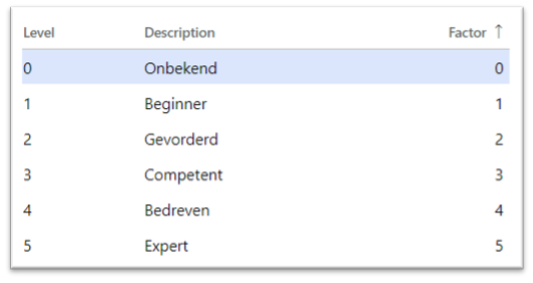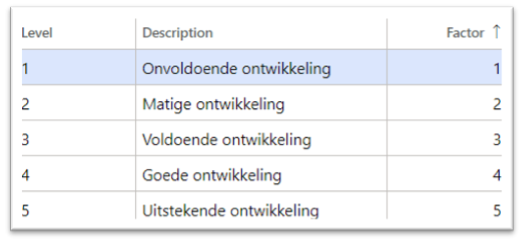Skill management and Continuous Performance Management are important for an effective performance cycle within organizations. But how does it work in practice?
Skills at a personal and function level
In Dynamics 365 HR you can document skills, certifications and training at a personal level and at a job level. The job level is the level needed to be able to perform the tasks associated with someone’s position. A personal level can also be documented for each employee. With the Skill gap analysis it is subsequently a simple matter to compare the individual skills of an employee against a job profile, enabling you to quickly spot any gaps. For example, somebody may be missing an important skill, or the skill is not yet at the right level.
Of course this does not say a lot about someone’s potential for reaching that level. To be able to evaluate this properly it’s therefore important to include skills in the performance cycle. In that performance cycle the emphasis is mainly on someone’s development. For this purpose you can add competencies to the Dynamics 365 HR evaluation form and use this to monitor the skill development.
Obviously, you will evaluate a competency in the evaluation form differently from someone’s skill level. The skill level represents the current situation, while the performance cycle is usually intended to look at the development over a certain period. For example, an employee can score low for a certain skill, but score high for the development of the skill in question.
Example of Skill management
Company X uses the following evaluation models to assess skills and performance.

Paula works in the marketing department and has an evaluation meeting with her manager. To prepare for this meeting she compares her own skills to the skills associated with her position. Paula possesses the Presenting skill at level I (Beginner). The desired job level is level 4 (Proficient), so she has some work to do. This is why Paula and her manager add this skill as a competency to the evaluation form. She works on her presentation skills throughout the year and the manager is very satisfied with her development. Consequently, Paula scores 4 points (Good development) in the evaluation form with respect to the development of this skill. Paula and her manager also decide that she has now achieved skill level 3 (Competent).

Although her presentation skills are not yet at the desired level for her position (job level: 4, personal level: 3), throughout the year Paula has demonstrated rapid development in this area, namely from level 1 (Beginner) to level 3 (Competent).
Don’t evaluate employees on the basis of objectives or targets only
If, in this example, we were to look at the skill level only, we would have the impression that after a year of hard work Paula is still not meeting the job requirement. However, by including this skill in the performance cycle it becomes evident that Paula does in fact have the potential to achieve the desired level and could possibly even become an expert.
This example shows how you can focus your performance management in Microsoft Dynamics 365 HR on the skills development of employees. By making the development part of the performance management you can evaluate your employees for their development and not just on the basis of objectives or targets.


